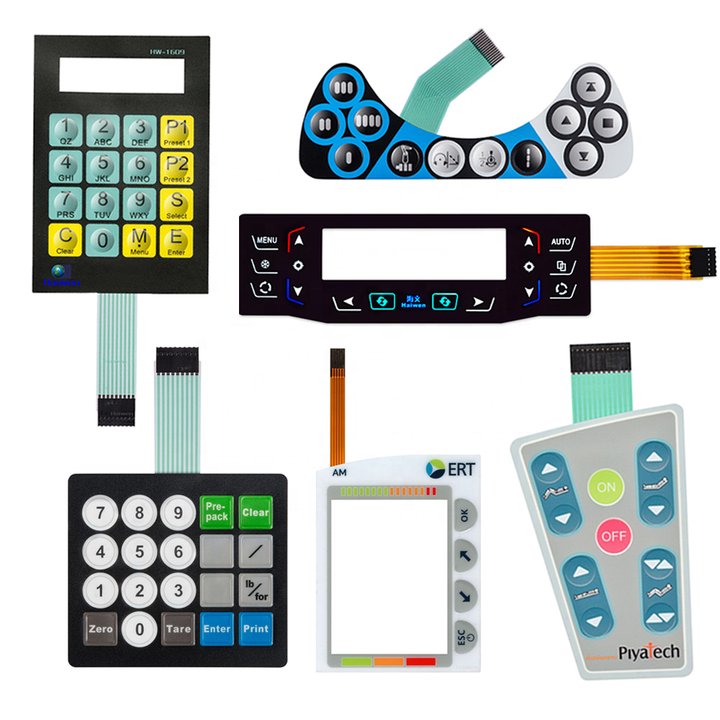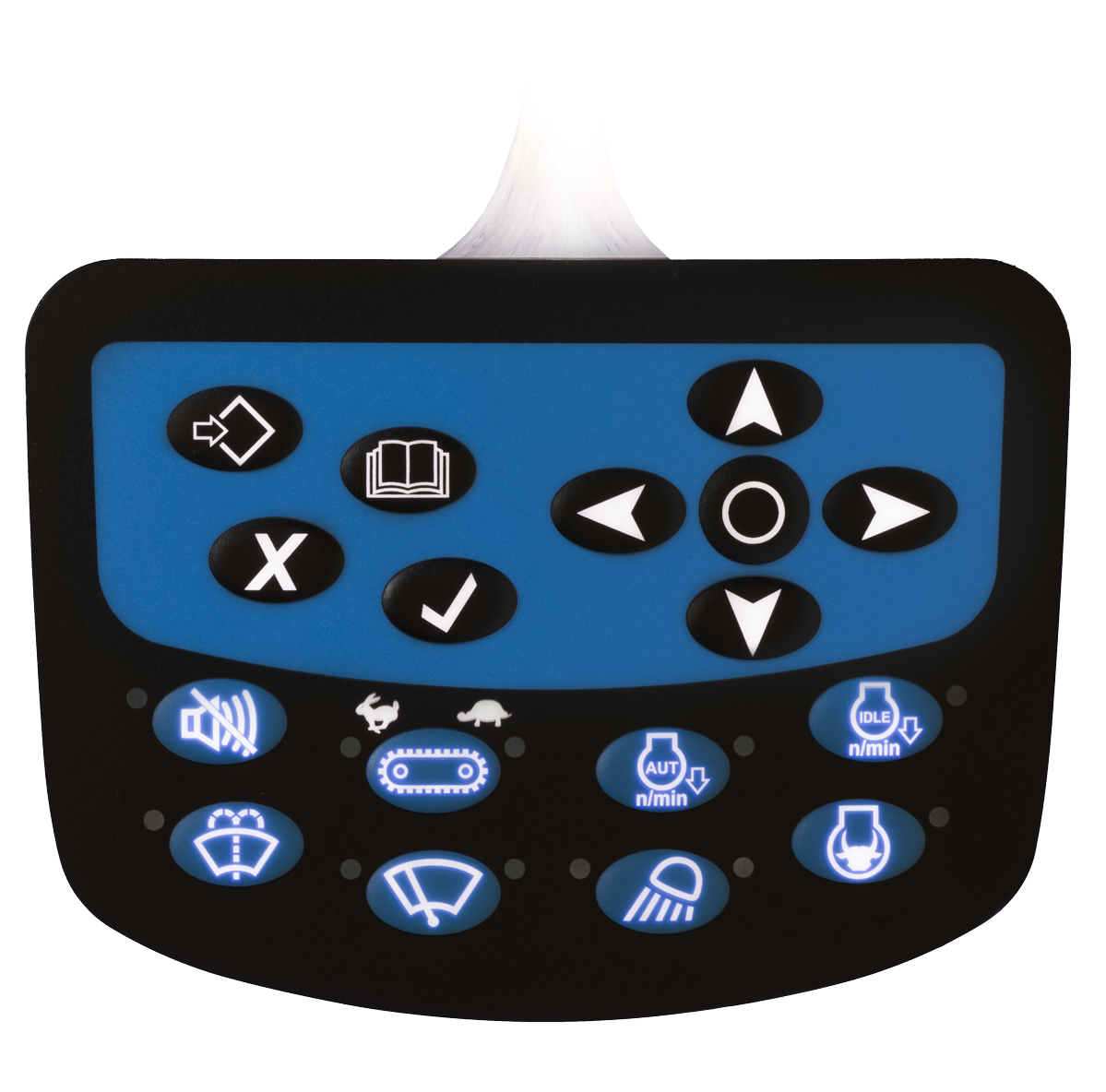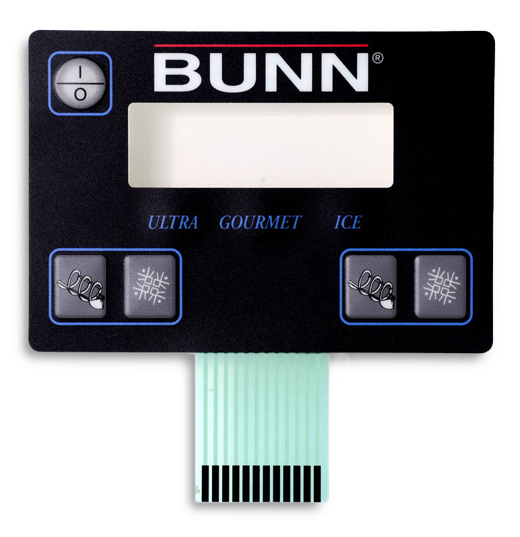Understanding the Importance of Membrane Switches in User User Interfaces
Membrane buttons are indispensable elements in the design of efficient interface, helping with not just capability but additionally improving aesthetic allure and user communication. Their distinct features, such as resistance to personalized styles and ecological elements, make them ideal for a varied range of applications throughout multiple sectors. As we explore the numerous advantages and future patterns associated with Membrane modern technology, it ends up being clear that these buttons are much more than simply components; they represent a merging of technology and functionality. The implications of this innovation on customer experience are worth taking a look at further.
What Are Membrane Buttons?

The spacer layer, which consists of sticky buildings, permits the splitting up of the circuit layer from the overlay, making sure that the button continues to be in a non-activated state until pushed. When stress is put on the overlay, it compresses the spacer layer, bridging the gap and finishing the circuit in the underlying layer. This style not only reduces the physical space needed for standard mechanical switches but also boosts the longevity of the gadget, as Membrane buttons are usually resistant to dust, dampness, and various other environmental factors.
Generally discovered in applications ranging from customer electronic devices to medical tools, Membrane buttons are important to modern innovation, giving a straightforward and effective interface that straightens with contemporary layout demands.
Advantages of Membrane Buttons
While numerous button technologies exist, Membrane Switches offer distinctive advantages that make them specifically desirable in numerous applications. One of the key benefits of Membrane switches is their small layout, which enables space-saving executions in devices where realty is limited. Their slim profile not only improves visual appeal however also assists in light-weight building.
An additional significant advantage is their resistance to ecological elements. Membrane buttons are usually secured against wetness, dirt, and impurities, making them optimal for use in demanding settings, such as medical devices and industrial tools. This resilience prolongs the life-span of the switch, decreasing maintenance prices and improving reliability.
Additionally, Membrane buttons can be customized to meet particular style needs, including unique graphics and colors that improve individual communication. Their responsive responses alternatives can additionally be tailored to provide a rewarding customer experience. Additionally, Membrane switches are cost-effective, particularly in high-volume applications, as they can be created effectively.
Applications in Numerous Industries

In the customer electronics sector, Membrane switches are prevalent in gadgets such as microwaves, cleaning devices, and remote controls. Their responsive comments and aesthetic alternatives improve user experience while offering a streamlined, modern appearance. In addition, vehicle suppliers use Membrane buttons in dashboard controls and infomercial systems, where room is restricted, and user involvement is important.
Furthermore, the commercial industry leverages Membrane switches in control panels for equipment and equipment, permitting for intuitive procedure in commonly severe settings. Their resistance to chemicals and wetness makes certain durability and integrity in these applications. In general, the flexibility of Membrane Switches adds significantly to their extensive usage, making them essential in numerous technological domains.
Layout Considerations for Membrane Buttons

When developing Membrane buttons, several essential factors to consider should be thought about to guarantee ideal capability and user experience. Firstly, the option of products is essential; selecting resilient, premium substratums can boost the button's longevity and resistance to environmental aspects such as wetness and temperature level variations.
Secondly, the design of the graphic overlay should prioritize clarity and convenience of usage. Symbols and message must be clear, and the layout should facilitate intuitive communication (membrane switches). In addition, responsive comments is vital; integrating a tactile dome or various other devices can enhance the customer experience by giving physical verification of activation
One more vital variable is the button's electrical efficiency. Developers should guarantee that the conductive traces are correctly developed to minimize resistance and stay clear of signal disturbance. This involves assessing the called for actuation force and ensuring compatibility with the digital elements they will user interface with.

Future Fads in Membrane Modern Technology
As innovation proceeds to development, Membrane switches are positioned to develop significantly, driven by advancements in materials and making techniques. One arising trend is the consolidation of advanced materials, such as adaptable substrates and conductive inks, which improve longevity and decrease the total weight of Membrane switches. These products not just improve the responsive feedback but likewise permit for the design of buttons that can hold up against harsher environmental conditions.
In addition, the integration of touch-sensitive innovations is changing typical Membrane Switches right into even more interactive interface. Capacitive touch sensing units installed within Membrane button panels can provide a much more intuitive and responsive individual experience, lining up with the expanding need for sleek, contemporary layouts in customer electronics.
Additionally, developments in printing methods, such as electronic and 3D printing, make it possible for quick prototyping and customization of Membrane switches. This flexibility allows producers to respond much more rapidly to market demands and consumer preferences.
Finally, sustainability is ending up being a considerable focus, with makers checking out green products and procedures. As these patterns unfold, the future of Membrane innovation guarantees improved functionality, aesthetic appeal, and ecological duty, strengthening their function in check over here sophisticated interface across various sectors.
Verdict
In verdict, Membrane Switches stand for an essential part in the style of interface, combining functionality with visual versatility. Their advantages, including durability and resistance to ecological aspects, make them suitable for diverse applications throughout different industries. In addition, thoughtful layout considerations enhance customer interaction and experience. As developments in technology proceed, the evolution of Membrane switches is anticipated to additional refine customer interfaces, driving development and improving usability in a significantly complicated technological landscape.
Membrane buttons are integral elements in the layout of efficient individual interfaces, facilitating not only capability but likewise improving visual appeal and individual communication.Membrane Switches serve as a vital part in various individual interfaces, facilitating a seamless interaction in between customers and digital devices.While various button modern technologies exist, Membrane Switches offer unique benefits that make them especially desirable in different applications.In addition, Membrane switches can be customized to satisfy certain layout needs, including unique graphics and colors that enhance individual interaction.In final thought, Membrane Switches stand for a vital component in the design of user interfaces, combining functionality with aesthetic flexibility.